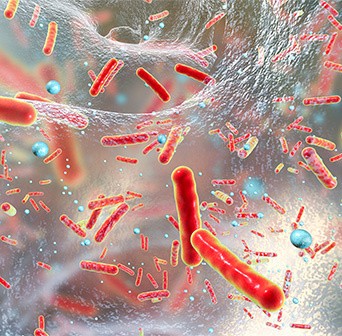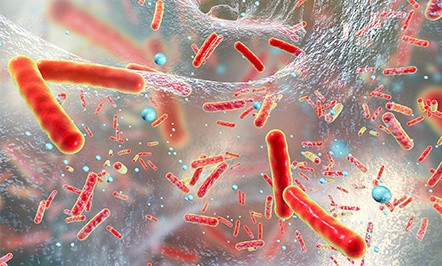7 levers to limit the use of antibiotics
Reducing antibiotic use in livestock and facing the increasing global demand for meat is a complex challenge. Experts from the TECHNA group have built a global approach around seven key points to address these issues.
There will be eleven billion people on Earth in 2050, while we are only seven billion today. This growth means that the global demand for meat will increase, and accordingly, consumption of meat is expected to double by 2050. New rules have compelled farmers to decrease the use of antibiotics to treat animal diseases. These regulations aim at limiting the risks of antibiotic-resistant organisms in animals, especially with regard to consumer safety (25,000 deaths per year). In 2011, the European Commission set up a plan of action against the looming threat posed by antimicrobial resistance (AMR).
France in particular has introduced several ECO ANTIBIO plans:
- ECOANTIBIO 1 (2012-2017: target to reduce the use of ABs by 25%, ->results down 37%,
- ECOANTIBIO 2: no reduction target announced, but a desire to maintain the reduction -> use continued to fall, but less sharply.
However, there is no miracle cure that could demonstrate the efficiency of an antibiotic without having major drawbacks. Only a methodical approach could help us reach this goal. Therefore, the answer does not lie in a closed form solution but it is, in fact, multi-faceted. The TECHNA. Group has identified seven fields in which various actions can be undertaken. These constitute a marked path for organizations willing to engage in the project of limiting antibiotic usage.
1. A sector-driven dynamic
Current farming practices pose major health and environmental issues that have barely been measured so far. Farmers are often isolated and they cannot easily engage in environmental efforts by remaining on their own. To be effective, the implemented solutions require the participation of all players and of every link in the industry. The dynamic needs to be a collective one. Awareness of the risks incurred can be raised through outreach efforts, diagnosis tools, and reflections on new organizational schemes. Holding joint round table meetings between various actors in the sector could help define the constraints and limitations of each of them. Such initiatives would help to identify each person’s margin of maneuver and to define the most appropriate collective actions to take.
2. For animals, putting comfort first
To give its full potential, the animal must be reared in optimal conditions. In addition, new regulations regarding sustainable development have an impact on rearing choices when it comes to water, air, compound feed, prevention, stock raising. The setting of husbandry standards, of diagnoses, the evaluation of current techniques can change current practices and allow the emergence of new alternatives.
3. Nutrition is the key
The growth of animals is dependent on their nutrition, and also has an impact on their health. Furthermore, feed is often the main item on the budget of animal farms, as it often accounts for over 60-70% of productions costs. Therefore feeding expenses need to be optimised. Precision nutrition means that the right doses are given and that the correct additive mixes are formulated. This science allows for the application of accurate nutritional expertise and the precise matching between the ration’s supplies and animals’ needs. Also remember that preventive nutrition is necessary for improving; securing or correcting animals' performances at the upstream stage of the rearing cycle.
4. It all starts with the parents
Farm animals are more vulnerable to health problems when they are young, or during weaning in the case of mammals. Young animals are therefore dependent on their innate health passed on to them by their parents. For this reason, a particular attention must be granted to the management of breeding females so their health capital can be transmitted in the best possible conditions.
5. Being well informed to make the right decisions
Farmers are the pilots within their farms. They observe measure, decide and act. They must also be capable of reaping the benefits of their hard work. To make the right decisions and act accordingly, they need to be provided with diagnosis tools, indicators that can be applied as soon as possible, along with procedures for decision-making and acting. As such, the measures of antibiotic reduction will not appear to them as a series of new constraints but as a way to gain new skills.
6. The rational use of risky products
A reasoned use of medicines implies that alternative solutions should be implemented as a first-line strategy. Risky products should only be used as a last resort, should alternative solutions have already proved inefficient.
7. A constant quest for progress
Solutions are never designed to be permanent. It’ is a state of mind, an openness to change, a constant quest for new solutions. Ongoing innovation means that alternative solutions are researched, that solutions assessment methods are reflected and feedbacks from the field constantly sought.
“If you want to go fast, go alone – if you want to go further, go together”. Whatever your position in the industry, the global approach may be of interest to you. Thanks to our strategy, you can optimise health expenses while saving on production costs. For more information, please contact our experts!

